Rio Tinto, the global mining powerhouse, is quietly revolutionizing water technology investment. With over $15 billion in operating cash flow and a strategic focus on water security, the company is pioneering innovative solutions for industrial water management. From groundbreaking desalination projects in Australia’s Pilbara region to cutting-edge water treatment technologies, Rio Tinto’s approach combines environmental stewardship with technological advancement. Their investment strategy reflects a deep understanding that water security isn’t just about compliance – it’s about long-term sustainability and competitive advantage in an increasingly water-stressed world.
Rio Tinto is part of my Ultimate Water Investor Database, check it out!
Investor Name: Rio Tinto
Investor Type: PE
Latest Fund Size: $1800 Million
Dry Powder Available: Yes
Typical Ticket Size: >$75M
Investment Themes: Desalination, Water Management Technology, Environmental & Cultural Sensitivity
Investment History: $2390909.09 spent over 2 deals
Often Invests Along:
Already Invested In: ElectraLith
Leads or Follows: Lead
Board Seat Appetite: Rare
Key People:
The Investment Powerhouse: Rio Tinto’s Water Tech Portfolio
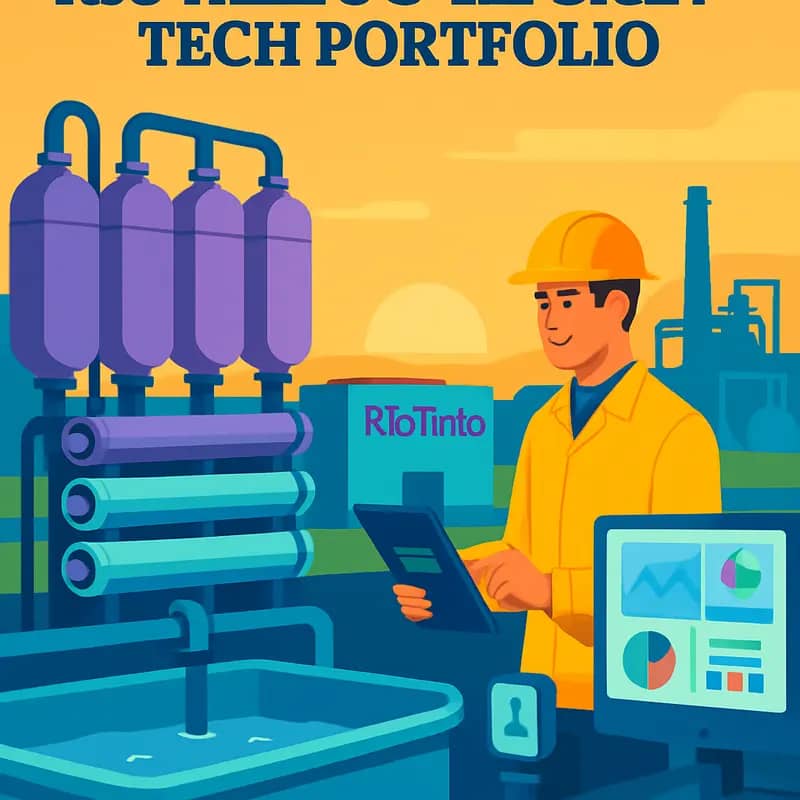
Rio Tinto’s robust $15.6 billion operating cash flow has positioned the mining giant as a formidable force in water technology investment. Their strategic approach combines direct technology acquisitions with collaborative innovation partnerships, creating a diversified water solutions portfolio that addresses both immediate operational needs and long-term sustainability goals.
The company’s investment strategy centers on three key areas: water efficiency technologies, water treatment innovations, and smart water management systems. A significant portion of their water tech investments targets reducing freshwater consumption in mining operations through advanced recycling and reuse solutions. These initiatives have already yielded a 15% reduction in freshwater withdrawal across their global operations over the past three years.
Rio Tinto’s commitment to water innovation extends beyond traditional infrastructure investments. The company has established a dedicated water technology venture fund, allocating substantial resources to emerging solutions that promise to revolutionize mining water management. Their investment approach mirrors successful models seen in other sectors, as outlined in how to take mid-market green tech companies to the next level.
Their recent major projects showcase this comprehensive strategy. In the Pilbara region, Rio Tinto deployed an AI-powered water optimization system that reduced water consumption by 30% while maintaining production levels. The success of this initiative has led to its implementation across other operations globally. The company has also invested heavily in membrane technology development, focusing on solutions that can handle the unique challenges of mining wastewater treatment.
Partnerships play a crucial role in Rio Tinto’s water technology portfolio. The company has established collaborations with leading research institutions and technology providers, creating a robust innovation ecosystem. These partnerships have accelerated the development and deployment of water solutions, particularly in areas like brine management and acid mine drainage treatment.
The financial commitment to water technology isn’t just about environmental stewardship – it’s a strategic business decision. Rio Tinto’s analysis shows that every dollar invested in water technology yields approximately $3.50 in operational savings and risk mitigation benefits. This return on investment has helped secure continued support for water innovation initiatives despite market fluctuations.
Looking ahead, Rio Tinto’s water technology investment pipeline remains strong, with particular emphasis on digital solutions and automated systems that can enhance water management efficiency. The company’s investment strategy increasingly focuses on scalable solutions that can be deployed across multiple sites, maximizing the impact of their technology investments while building resilience against water-related operational risks.
From Mine to Innovation: Water Security Solutions
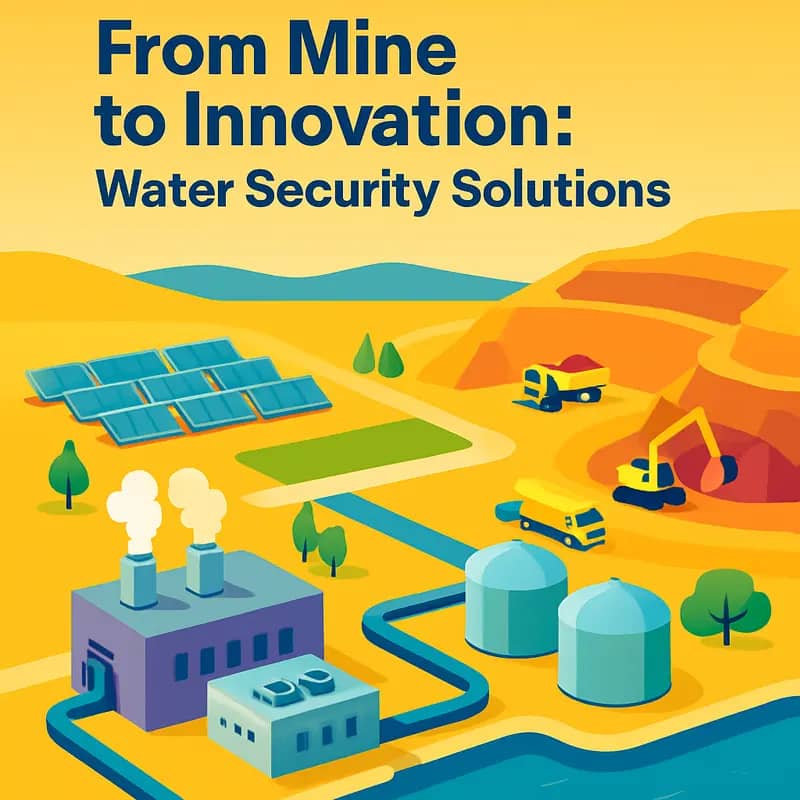
Rio Tinto’s strategic focus on water security, particularly through desalination initiatives, represents a paradigm shift in how mining companies approach water management in water-stressed regions. The mining giant has positioned itself at the forefront of industrial water innovation through targeted infrastructure investments and pioneering technologies.
In Chile’s Atacama Desert, one of the world’s driest regions, Rio Tinto has implemented large-scale desalination solutions to support its copper mining operations. These facilities not only ensure operational continuity but also minimize environmental impact on local freshwater resources. The company’s desalination plants process seawater through advanced membrane technology, producing high-quality water while managing brine disposal through innovative diffuser systems that protect marine ecosystems.
Beyond desalination, Rio Tinto has developed comprehensive water security frameworks that integrate multiple solutions. These include water recycling systems that achieve up to 80% reuse rates in mining processes, automated monitoring networks that optimize water consumption in real-time, and sophisticated water balance models that enable predictive management of water resources across operations.
The company’s approach to water security extends beyond its operational boundaries. Through partnerships with local communities and water authorities, Rio Tinto has established shared water infrastructure that benefits both mining operations and neighboring populations. This collaborative model has proven particularly successful in Australia’s Pilbara region, where the company’s water management systems support both mining activities and community needs.
Rio Tinto’s water security initiatives demonstrate a clear understanding that water scarcity represents both a business risk and an opportunity for innovation. By investing in water infrastructure that can withstand climate variability and increasing water stress, the company has created resilient operations while developing transferable solutions for the broader mining sector.
Particularly noteworthy is the company’s emphasis on digital integration in water management. Advanced analytics and artificial intelligence help optimize water use across operations, while real-time monitoring systems enable rapid response to potential disruptions. This digital transformation of water infrastructure represents a significant step toward more sustainable mining practices.
As discussed in How to Fight a Pandemic with the Help of Your Feces, innovation in water infrastructure can have far-reaching impacts beyond its primary purpose. Rio Tinto’s investments in water security technologies are similarly creating ripple effects across the industry, setting new standards for responsible water management in mining operations.
Global Impact: Geographic Reach and Investment Patterns
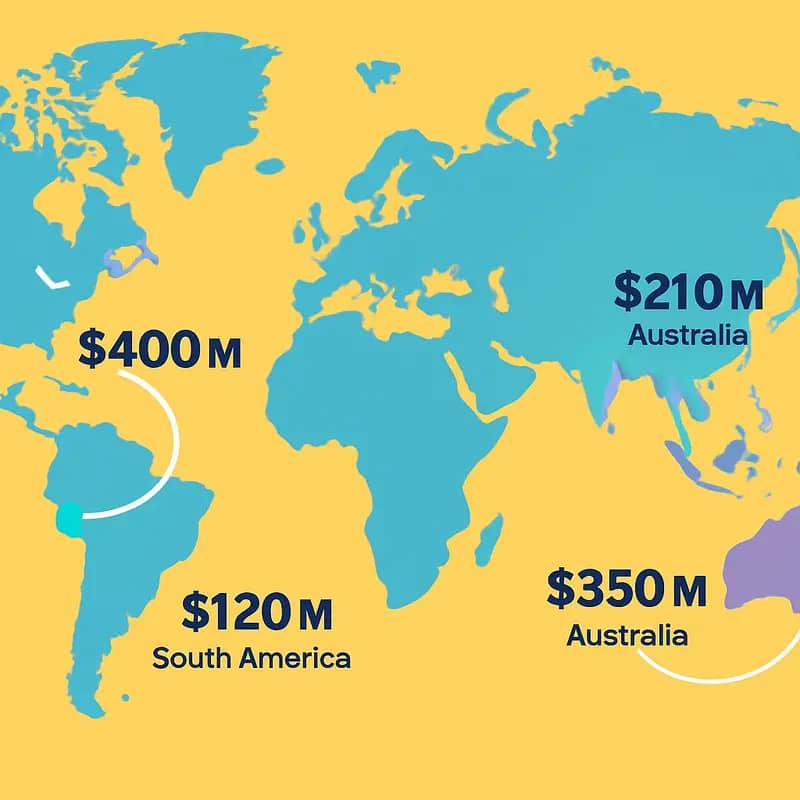
Rio Tinto’s expansive water investment strategy spans multiple continents with a calculated distribution of resources aligned with regional water challenges and opportunities. The mining giant has established a clear geographic hierarchy, prioritizing investments based on operational needs and potential impact.
In Australia, where water scarcity poses significant operational risks, Rio Tinto has committed substantial capital to innovative water management solutions. The company’s investments focus on drought-resilient infrastructure, particularly in the Pilbara region where iron ore operations demand reliable water access. Their strategy includes large-scale water recycling facilities and advanced monitoring systems to optimize water usage across mining sites.
North American investments reveal a different pattern, with Rio Tinto emphasizing technological innovation and efficiency improvements. In Canada’s aluminum operations, the company has pioneered closed-loop water systems that significantly reduce freshwater consumption. The approach combines water reuse technologies with smart monitoring solutions, demonstrating how private capital can change the world of water for the better.
In emerging markets, Rio Tinto adopts a dual approach: addressing immediate operational needs while contributing to regional water security. Mongolia’s Oyu Tolgoi copper mine exemplifies this strategy, where investments in groundwater management systems protect both mining operations and local communities’ water access. The company’s approach includes capacity building and knowledge transfer, ensuring long-term sustainability of water infrastructure investments.
A notable aspect of Rio Tinto’s investment pattern is its emphasis on scalable solutions. Rather than pursuing isolated projects, the company develops water management frameworks that can be adapted across different geographic contexts. This approach maximizes return on investment while building institutional knowledge about water challenges in various climatic and regulatory environments.
The company’s investment decisions also reflect an understanding of regional regulatory landscapes. In jurisdictions with stringent water regulations, investments tend toward cutting-edge compliance technologies. In contrast, regions with developing regulatory frameworks see investments in foundational infrastructure paired with community engagement initiatives.
Through careful geographic diversification, Rio Tinto has created a water investment portfolio that balances immediate operational needs with long-term sustainability goals. This global approach not only protects their mining operations but also positions them as a leading force in water infrastructure development across diverse markets.
Future Flow: Innovation Pipeline and Partnership Strategy
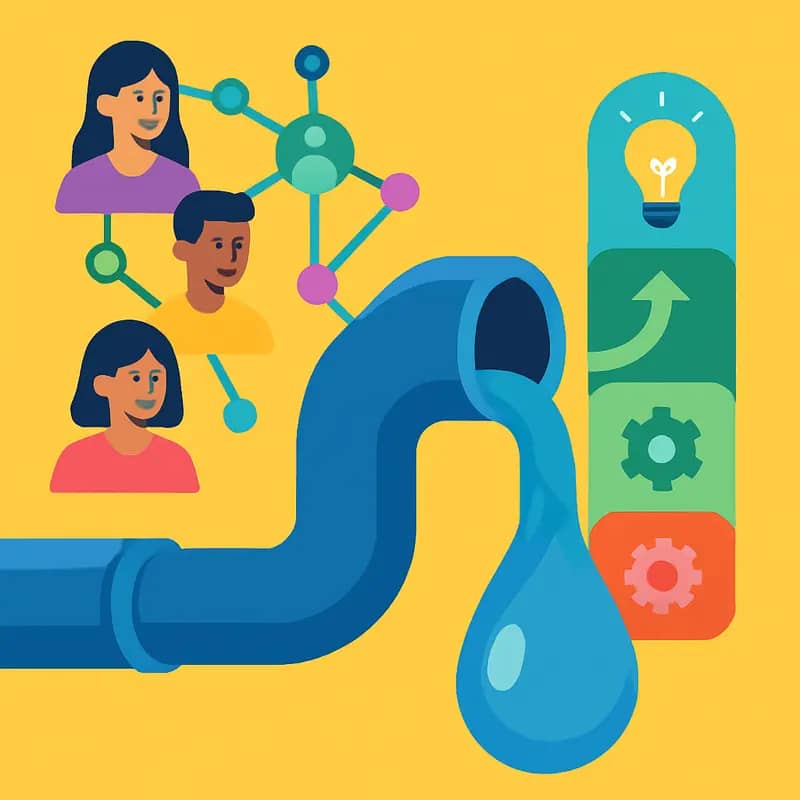
Rio Tinto’s approach to water technology innovation hinges on a sophisticated partnership ecosystem that leverages both established players and emerging startups. The mining giant has developed a three-tiered partnership model that maximizes value creation while distributing risk across its innovation portfolio.
At the foundation lies Rio Tinto’s network of academic partnerships, where the company funds fundamental research at leading institutions worldwide. These collaborations focus on breakthrough technologies in areas like membrane development, advanced oxidation processes, and real-time monitoring systems. By maintaining close ties with researchers, Rio Tinto gains early access to potentially transformative innovations.
The second tier comprises strategic corporate partnerships with established technology providers. These relationships enable rapid scaling of proven solutions across Rio Tinto’s global operations. The company’s innovation strategy mirrors successful approaches seen in other sectors, focusing on practical implementation rather than just theoretical breakthroughs.
The third and perhaps most dynamic tier is Rio Tinto’s startup acceleration program. The company takes minority stakes in promising early-stage water technology companies, providing them with real-world testing environments at operating mines. This approach gives Rio Tinto a front-row seat to emerging solutions while helping startups validate their technologies in demanding industrial settings.
What sets Rio Tinto’s partnership strategy apart is its emphasis on cross-pollination between tiers. Academic researchers regularly collaborate with startup founders, while established corporate partners provide manufacturing expertise to scale breakthrough technologies. This integrated approach has yielded several notable successes, particularly in water recycling and contaminant removal technologies.
The company’s role as lead investor goes beyond mere financial support. Rio Tinto actively shapes technology development through detailed performance specifications based on operational needs. This ensures innovations address real-world challenges while meeting stringent safety and reliability requirements. The company’s technical experts work closely with partners throughout development cycles, providing invaluable industry insight and validation.
Looking ahead, Rio Tinto continues to expand its partnership network while maintaining focus on key strategic areas: autonomous treatment systems, predictive analytics for water infrastructure, and zero-liquid discharge technologies. The company’s investment thesis emphasizes solutions that can scale across its global operations while delivering measurable environmental benefits.
The Water-Mining Nexus
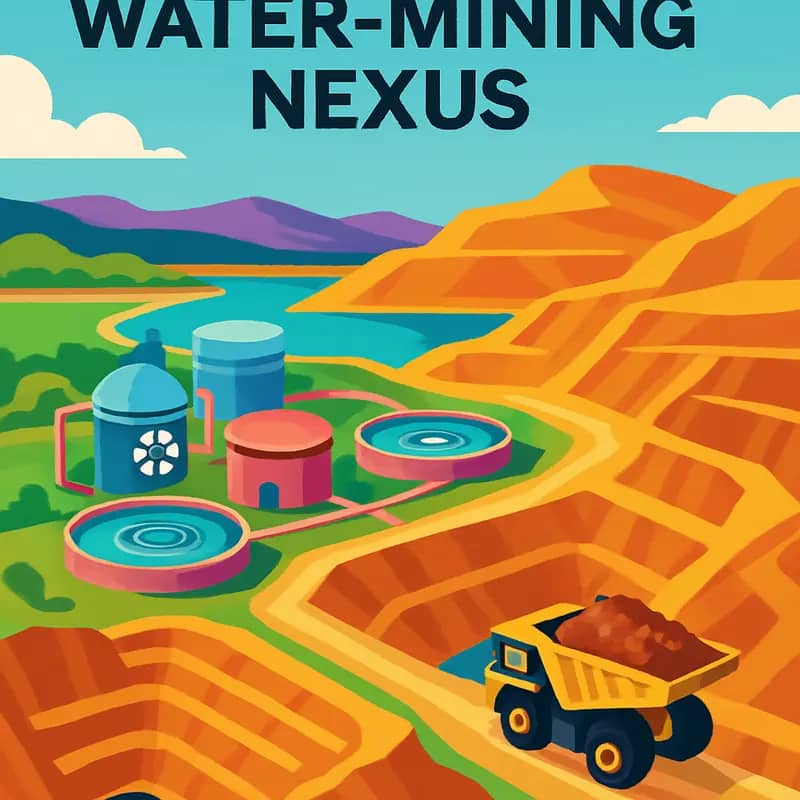
Mining operations and water management form an inseparable bond at Rio Tinto’s global sites. The mining giant’s position at this critical intersection presents both monumental challenges and opportunities for innovation in sustainable water infrastructure.
At the heart of Rio Tinto’s water management challenge lies the massive scale of its operations. A typical mining site requires millions of gallons of water daily for mineral processing, dust suppression, and worker facilities. This creates an intricate web of water sourcing, treatment, and disposal needs that must be carefully balanced against environmental impacts and community requirements.
The company faces unique geographical challenges across its diverse portfolio. From water-scarce regions in Australia to high-altitude operations in Mongolia, each site demands tailored solutions. In arid areas, Rio Tinto must maximize water efficiency and reuse while maintaining production levels. In regions with excess water, the focus shifts to responsible discharge and preventing contamination of local water sources.
Rio Tinto has embraced these challenges as catalysts for innovation. The company has developed sophisticated water accounting frameworks that track every drop from source to discharge. This data-driven approach enables precise optimization of water usage across different operational stages. Learn more about water accounting and optimization.
The company’s investment in water infrastructure extends beyond immediate operational needs. Rio Tinto has pioneered closed-loop water systems that minimize freshwater intake and wastewater discharge. These systems incorporate advanced treatment technologies, including reverse osmosis and ion exchange, to maintain water quality suitable for reuse in mining processes.
Particularly noteworthy is Rio Tinto’s approach to mine water management in sensitive ecosystems. The company has developed sophisticated groundwater modeling capabilities to predict and prevent impacts on local aquifers. This proactive stance on environmental protection has become a model for the mining industry.
Through strategic partnerships with technology providers and research institutions, Rio Tinto continues to push the boundaries of water innovation. The company’s commitment to sustainable water management has positioned it as a leader in mining sector environmental stewardship, while simultaneously driving operational efficiency and cost reduction.
This unique position at the water-mining nexus has forced Rio Tinto to become more than just a mining company – it has evolved into a pioneer of integrated water solutions. The lessons learned and technologies developed through this evolution hold valuable implications for water management across various industrial sectors.
From Challenge to Innovation
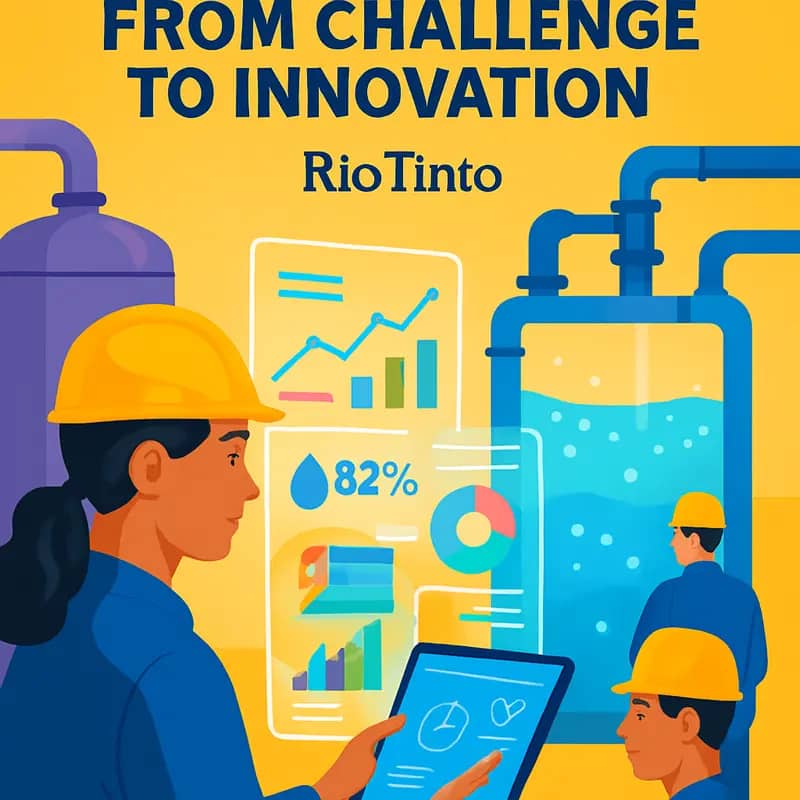
Rio Tinto’s journey into water technology innovation emerged from necessity but evolved into groundbreaking solutions with far-reaching implications beyond the mining sector. Faced with unique water management challenges in remote locations and extreme conditions, the company has developed sophisticated water treatment and recycling technologies that demonstrate remarkable versatility.
A cornerstone of Rio Tinto’s innovation portfolio is its advanced water filtration systems, engineered to handle high mineral content and challenging chemical compositions. These systems employ novel membrane technologies that can process water with unprecedented efficiency while consuming significantly less energy than conventional methods. The potential applications extend to municipal water treatment, industrial wastewater processing, and even specialized sectors like pharmaceutical manufacturing.
The company’s predictive analytics platform for water management represents another breakthrough. By integrating real-time monitoring with machine learning algorithms, this system can forecast water quality fluctuations and optimize treatment processes accordingly. The technology has proven valuable for managing tailings facilities and could revolutionize urban water infrastructure management and agricultural irrigation systems.
Perhaps most impressive is Rio Tinto’s closed-loop water recovery system, which achieves recovery rates exceeding 85% in mining operations. This innovation combines selective separation technologies with advanced oxidation processes to treat and recycle water that would traditionally require disposal. The system’s modular design makes it adaptable for various industrial applications, from food processing to textile manufacturing.
These technological advances align with the global push toward circular water economy principles. Rio Tinto’s innovations demonstrate how industrial water consumers can transition from being resource-intensive operators to becoming water stewardship leaders. The company’s solutions address critical challenges in water scarcity, environmental protection, and operational efficiency.
The scalability of these technologies presents significant opportunities for cross-industry application. Many of the challenges Rio Tinto has solved in mining contexts – such as handling high-salinity water or removing specific contaminants – parallel problems faced in other sectors. As industries worldwide grapple with stricter environmental regulations and water scarcity, these innovations offer proven solutions that can be adapted and implemented across different scales and contexts.
Collaborations with research institutions and technology partners have been crucial in developing these solutions. This approach to innovation, combining practical industrial experience with academic expertise, has created technologies that are both theoretically sound and practically viable. Learn more about how ideas come to life in water treatment.
Investment Landscape and Opportunities

The water technology innovations emerging from Rio Tinto’s research and development efforts present compelling investment opportunities across multiple domains. The mining giant’s strategic focus on water infrastructure has created a ripple effect throughout the industrial water sector, opening new avenues for both institutional and private investors.
Industrial water management solutions developed by Rio Tinto demonstrate particularly strong commercial potential. Their advanced water recycling systems and treatment technologies have proven effective at scale, attracting attention from other water-intensive industries seeking to optimize their operations. According to market analyses, the industrial water treatment sector is projected to grow at a CAGR of 6.8% through 2028, making it an attractive target for strategic investment.
The most promising investment opportunities lie in three key areas: water recycling and reuse technologies, smart water monitoring systems, and resource recovery solutions. Rio Tinto’s innovations in these domains have demonstrated both operational effectiveness and cost efficiency – two crucial factors that enhance their investment appeal. Companies developing complementary technologies or looking to integrate these solutions into their existing water management systems represent natural investment targets.
Venture capital and private equity firms are increasingly recognizing the value proposition of industrial water technologies. As evidenced by recent funding rounds in the sector, investors are particularly drawn to solutions that offer both environmental benefits and clear paths to profitability. The scalability of Rio Tinto’s innovations makes them especially attractive as investment vehicles.
Beyond direct technology investments, opportunities exist in supporting infrastructure and services. This includes data analytics platforms, maintenance services, and consulting firms specializing in industrial water management. These adjacent market segments often offer lower barriers to entry while still benefiting from the growing adoption of advanced water technologies.
Risk considerations in this investment landscape primarily center around regulatory compliance, technology validation timelines, and market adoption rates. However, Rio Tinto’s successful implementation of these technologies provides valuable proof of concept, potentially reducing investment risk profiles. Additionally, as discussed in Can Private Capital Change the World of Water for the Better?, the increasing focus on environmental, social, and governance (ESG) criteria has created favorable conditions for water technology investments.
The investment potential extends beyond traditional financial returns. As water scarcity becomes a more pressing global issue, technologies that enhance water efficiency and enable sustainable industrial practices are likely to see increased demand. This creates opportunities for impact investors seeking both financial returns and environmental benefits.
Strategic partnerships and licensing agreements represent another avenue for investment in this space. Rio Tinto’s willingness to collaborate with technology providers and industrial partners has created a framework for similar arrangements across the sector, opening doors for investors to participate in joint ventures and technology transfer agreements.
Future of Industrial Water Management
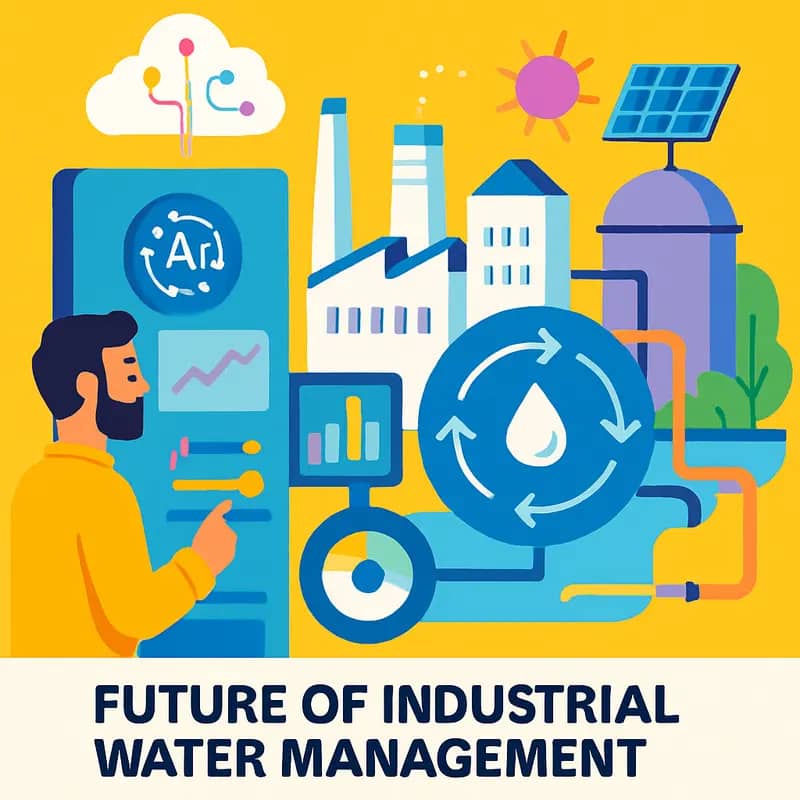
Rio Tinto’s pioneering water management innovations are catalyzing a fundamental shift in how industries approach water infrastructure and creating exciting opportunities for entrepreneurs. By implementing advanced water recycling systems and digital monitoring networks across their mining operations, Rio Tinto has demonstrated how industrial facilities can dramatically reduce freshwater consumption while improving operational efficiency.
The mining giant’s water innovation strategy focuses on three key areas that are reshaping industrial water management. First, their deployment of AI-powered predictive analytics allows real-time monitoring of water quality and flow, enabling proactive maintenance and optimization of treatment systems. This shift toward data-driven operations is opening new opportunities for entrepreneurs developing sensor technologies and analytics platforms.
Second, Rio Tinto’s investment in modular water treatment systems that can be rapidly deployed and scaled has created a model for flexible, adaptable infrastructure. This approach reduces capital costs while allowing facilities to quickly adjust treatment capacity based on operational needs. Entrepreneurs are now developing similar modular solutions for other industries, from food processing to manufacturing.
Third, the company’s circular water economy initiatives, which focus on maximizing water reuse and resource recovery, are demonstrating the commercial viability of closed-loop systems. Their success is encouraging other industries to explore water recycling, creating opportunities for technology providers and treatment specialists.
For entrepreneurs, Rio Tinto’s innovations highlight several promising areas for development. The growing demand for advanced monitoring and control systems presents opportunities in sensor technology, data analytics, and automation. The shift toward modular, scalable treatment solutions creates openings for innovative equipment designs and delivery models. Additionally, the focus on resource recovery from wastewater streams opens possibilities for new separation technologies and valuable byproduct extraction.
As industries worldwide face increasing water scarcity and regulatory pressure, Rio Tinto’s approach provides a blueprint for sustainable water management. Their success demonstrates that investments in water innovation can deliver both environmental and economic benefits, encouraging other companies to follow suit. This transformation of industrial water management is creating a rich ecosystem for entrepreneurial innovation, where new technologies and business models can thrive.
Final words
Rio Tinto’s strategic positioning in water technology investment reveals a sophisticated understanding of the water-energy nexus in mining operations. Their substantial financial commitment, evidenced by the $15.6 billion operating cash flow and recent major investments, demonstrates that water security is no longer a peripheral concern but a core business imperative. The company’s approach to water technology – spanning desalination, advanced treatment systems, and digital solutions – sets a new standard for industrial water management. As water stress intensifies globally, Rio Tinto’s investment strategy offers valuable insights for both water entrepreneurs and impact investors. Their focus on scalable solutions, environmental stewardship, and strategic partnerships provides a blueprint for sustainable water infrastructure development. The mining giant’s evolution from traditional resource extraction to water innovation pioneer signals a broader shift in how industries view water technology investment – not just as a cost center, but as a crucial driver of long-term value creation and environmental sustainability.
Wanna explore the Full List of Water Investors that cut at least two checks over the past decade? Check it out and bookmark it, I update it regularly!
Learn more: https://dww.show/the-ultimate-water-investor-database/
About us
Through my “(don’t) Waste Water” platform, I offer unique and insightful coverage of the water industry that combines technical expertise with engaging storytelling. If you haven’t yet, it might be time for you to subscribe to the podcast, the youtube channel and/or the newsletter!
